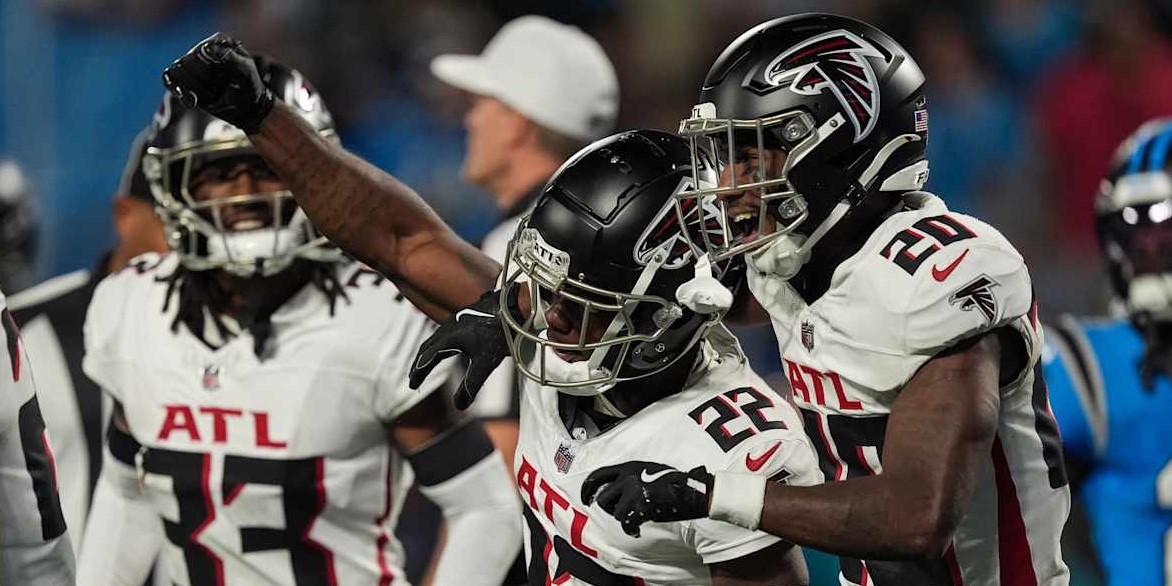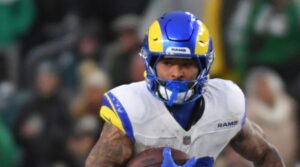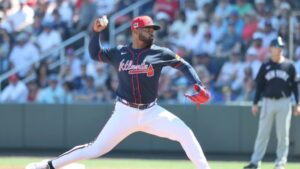
As the Atlanta Falcons’ defense grapples with challenges in stopping the run and generating consistent pressure, the secondary is poised to take on a critical role as the team navigates an exciting stretch of upcoming games. The Falcons have enjoyed a boost in morale thanks to their offensive success, highlighted by long scoring drives and victories in their first three divisional matchups. The early-season hype about their potential to evolve into a well-rounded offensive powerhouse appears to be materializing.
While the offense has garnered praise, attention has shifted towards the defense, which has struggled significantly during Atlanta’s three-game winning streak. Initially, concerns centered on the defensive line’s ability to create pressure with just a four-man rush. Relying on a mix of veterans might have seemed prudent, but as the season progresses, it has become apparent that some of their best days are behind them. More unexpectedly, a run defense that was solid when healthy last season has deteriorated, now ranking among the bottom in the league by allowing the eighth-most rushing yards per game.
The interior defensive line, featuring players like David Onyemata and Grady Jarrett alongside linebackers Kaden Elliss, Troy Andersen, and Nate Landman, should ideally inspire confidence. Yet, injuries have plagued the unit, raising concerns about their effectiveness in stopping opposing running games. Alarmingly, running backs have repeatedly breached the second level, exploiting gaps in the defense, which has led to heightened scrutiny of what was once regarded as the strength of Raheem Morris’ defense.
Despite the struggles of the front seven, the secondary has managed to maintain a semblance of organization and prevent significant plays from occurring. Last season, the defensive unit performed admirably under the guidance of Ryan Nielsen, who implemented a more man-oriented coverage scheme. This year, however, Morris and his team have relied heavily on zone coverage variations, which has yielded mixed results. Although the secondary has shown flashes of success, the defensive scheme’s vulnerabilities, coupled with personnel issues, could be costly as they face pass-heavy offenses in upcoming matchups against Seattle, Tampa Bay, and Dallas.
Morris has faced criticism for the number of high-percentage throws opposing quarterbacks have been able to complete against his defense. The shift from a man-heavy approach to a more zone-based scheme has presented its own challenges. Ideally, a smoother transition could have occurred had Morris been hired during the previous season when the secondary was accustomed to a traditional Cover 2 and 4 defense. Now, the unit appears more suited for press coverage, yet they are frequently found out of position in zone schemes.
Currently, opposing quarterbacks are enjoying remarkable success against the Falcons’ defense, completing an astounding 73% of their passes—the highest in the league. Although the secondary ranks last in completion percentage, they have managed to restrict completions to an average of just 6.3 yards, indicating that while they are allowing completions, they are not yielding significant yardage. Nonetheless, questions persist about the effectiveness of their coverage schemes, especially considering the substantial investments made in key players like A.J. Terrell and Jessie Bates.
The secondary’s performance has been a mixed bag. While they have shown resilience against teams like Kansas City and New Orleans, their shortcomings against Tampa Bay and Carolina have raised alarms. One persistent issue is the lack of contested catches; the Falcons have recorded only 18 pass breakups through six games, with Bates and Dee Alford each notching three. Given the closeness of many games, it’s concerning that defenders are not more frequently involved in plays around the ball.
The statistics concerning individual players indicate that the struggles aren’t solely the fault of the secondary. Linebacker Kaden Elliss has allowed 20 receptions on 23 targets, which undoubtedly inflates the overall completion percentage against the Falcons. A weak pass rush exacerbates these issues, putting added pressure on the secondary. However, it’s important to note that all five of the team’s interceptions have occurred at critical moments, often stemming from remarkable individual efforts.
Key players like Bates, Terrell, and Clark Phillips have made game-altering interceptions in clutch situations, with Simmons standing out for his impressive play against Patrick Mahomes. The Falcons’ ability to maintain their position atop the NFC South can be attributed, in part, to these defensive plays, but sustaining success will be essential as they gear up for their next series of games.
Looking ahead, the upcoming three-matchup stretch against Seattle, Tampa Bay, and Dallas poses unique challenges. Each of these teams has potent offensive capabilities led by quarterbacks who can exploit defensive weaknesses. While Tampa Bay’s longest completion in their previous encounter with Atlanta was just 23 yards, they possess explosive weapons capable of challenging any defense, including the Falcons.
The Seattle Seahawks, who are desperate for a win following three consecutive losses, bring a formidable offensive arsenal featuring quarterback Geno Smith and dynamic wide receivers like DK Metcalf, Jaxson Smith-Njigba, and Tyler Lockett. Smith leads the league in dropbacks, which is reflective of the Seahawks’ need to pass frequently due to struggles with their offensive line. The Falcons’ secondary will need to be ready to counteract the various strategies employed by the Seahawks, including innovative formations designed to create mismatches.
The potential for adjustments in the cornerback rotation could also play a role in the upcoming games. Phillips has shown promise, and his recent performances could earn him increased playing time alongside established players like Terrell, who is under pressure to elevate his game against physical receivers.
In conclusion, the next three games will serve as a litmus test for the Falcons’ secondary, determining whether they can truly assert themselves as a cohesive unit or if they will falter against formidable passing offenses. The need for improved play from the entire defense, especially in the secondary, will be critical as the Falcons aim to maintain their competitive edge in the NFC South.





